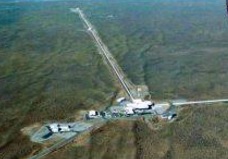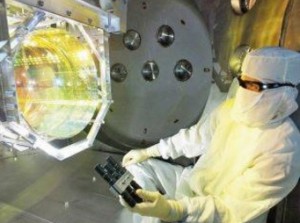
Proving of the relativity theory


Gravitational waves were first predicted by Einstein a century ago. Yesterday it was revealed that they have finally detected from two massive black holes colliding 1.3 billion light years away. The advanced Laser Interferometer Gravitational Wave Observatory ( LIGO) is a large scale Physics experiment to detect gravitational waves, is an example of extreme engineering chasing an impossible dream. Cofounded in 1992 by Kip Thorne and Ronald Drever of Caltech and Rainer Weiss of MIT, LIGO is a joint project between scientists at MIT, Caltech and many other colleges and universities. Scientists involved in the project and the analysis of data for gravitational-wave astronomy are organised by the LIGO Scientific Collaboration which includes over 900 scientists worldwide. LIGO is funded by the National Science Foundation (NSF) with critical contributions from the UK Science and Technology Facilities Council, the Max Planck Society of Germany, the Raman Research Institute in India, had pioneered the mathematical calculations, and the Australian Research Council. The world’s largest gravitational-wave facility completed a 5-year US $200million, at a total cost of $620m. On 11 February 2016, the LIGO collaboration detected gravitational waves from a signal detected at 09:51 UTC on 14 September 2015, of two ~30 solar mass black holes merging together about 1.3million light years from Earth. These waves first predicted by Einstein’s general theory of relativity in 1916, when the technology necessary for their detection did not yet exist. Their existence was indirectly confirmed when observations of the binary pulsar PSR 1913+16 in 1974, showed an orbital decay which matched Einstein’s predictions of energy loss by gravitational radiation. The Nobel Prize for Physics 1993 was awarded to Hulse and Taylor for this discovery.
The Twin LIGO installations one in Livingston, Louisiana and the other in Hanford, Washington are located 3000km apart. Two Blind L shaped detectors with 4km long vacuum chambers that can accommodate 11 Boeing 747-400 commercial airliners. When gravitational wave comes through, it stretches space in one direction, and squeezes space in the other direction. By measuring the interference of the laser as they bounce between the different point, physicist can measure very precisely whether the space in between has stretched or compressed. To detect a gravitational we should be able to tell when something changes in length by a few parts in 10 to the power of 23. Built 3000km apart, operation Unison to make the smallest measurement ever attempted by science – a motion 10, 000 times smaller than an atomic nucleus. Caused by the most violent occurring millions of light years away. It is like trying to hear a song being hummed in a boisterous party. Can detect gravitational waves in a volume of 1billion cubic light years covering about 1 million Milky Way type galaxies.
Understanding the response of the LIGO detector to the signals and terrestrial influences and bounding the orbital eccentricity and estimating the mass and spin of the final black hole. Estimating energy and power radiated during merger. Confirming that observed signal agrees with Einstein’s Theory of Relativity. Searching for a possible electromagnetic counterpart using optical telescopes. Some of these jobs were carried out in high performance computing facilities at IUCAA, Pune and ICTS, Bengaluru.The group, led by Bala Iyer at the Raman Research Institute in collaboration with scientists in France, had pioneered the mathematical calculations used to model gravitational wave signals from orbiting black holes and neutron stars.
Another group led by Sanjeev Dhurandhar at IUCAA initiated and carried out foundation work on developing data analysis techniques to detect these weak gravitational wave signals buried in the detector noise by looking for the best match between the calculated waveforms and the detector signal.
Meanwhile, the director of Pune’s Inter-University Centre for Astronomy and Astrophysics (IUCAA) Somak Raychaudhury said he was looking forward to the launch of a similar observatory in India.
A similar facility is being planned in India in a direction opposite to the two American observatories in Louisiana and Washington. “We need detectors in many more directions so that the exact route of the gravitational wave can be traced.
LIGO-India is being envisaged as a collaborative project between a consortium of Indian research institutions, the LIGO Lab in the US and its other international partners. The Centre has offered a funding of £12.14m (Rs 1,200 crore) for the project. While the LIGO lab is set to provide the complete design and the key detector components, Indian scientists will be responsible for the infrastructure to install the detector at a suitable site in India.
